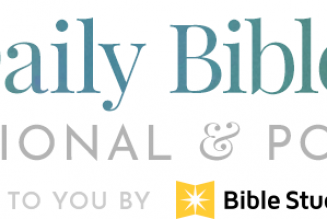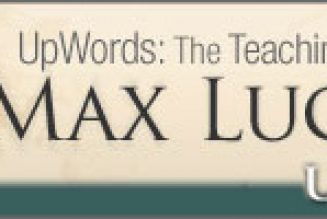
Tatian’s Blend: The Diatessaron
Tatian, a Syrian pupil of Justin the Martyr, led a religious group called the Ecratites known for a life of severe self-denial. Tatian had learned Christian theology while the four gospels were still “circulated independently,” according to the New World Encyclopedia, not as chapters of the New Testament. After Justin was martyred for his faith in Rome, Tatian “severed his ties with the church” and blended his ascetic leanings with Justin’s teachings to produce a version of the gospels known as the “Diatessaron.”
Diatessaron, derived from Greek and Old French, means “interval of a fourth” a.k.a. harmony. Tatian’s work does not represent every event told in the Gospels; he left out certain narratives such as the story of the adulteress whom Jesus saved from stoning.
“One scholar has estimated that the Diatessaron contains 50% of Mark’s Gospel, 66% of Luke’s, 76.5% of Matthew’s, and 96% of John’s Gospel: meaning that the work contains about 73% of the total material in the four Gospels,” as expressed here.
The New World Encyclopedia reported that Tatian sought to “resolve some of the contradictions found in the mainstream gospels by integrating them into one story and removing any duplicate information,” resulting in a final product which he considered more “harmonious” than a reading of each complete gospel. He also “formulated the doctrine that denied salvation to Adam, and he reinterpreted some of the Pauline texts of the New Testament […] to make them concur with the Encratite view that marriage was licentious and a service of the devil,” according to Encyclopedia Britannica.
Harmony of the Gospels
Charles Spurgeon compiled a list of biblical commentaries in his article “Commenting and Commentaries” published in 1890. Among examples of harmonized versions of the gospels were John Calvin’s (who left out the book of John), a Wesleyan version by Samuel Dunn (“by no means a despicable production” in Spurgeon’s opinion), and another by William Stroud M.D. who produced “one of the best” harmonies. Scholars continue to produce new versions.
According to Bible.org, there are four types of Harmonies: Radical, Synthetic, Sequential, and Parallel.
1. Radical harmonizing replaces details “with preferred wording drawn from another version” and “tends to produce a uniform official version of a saying or story in separate Gospels.”
2. Synthetic harmonies “add details […] to produce a conflated version that is not identical with any one source.”
3. Sequential harmonizing “preserves […] repetitions of sayings and stories” known as “doublets.”
4. Finally, “a Parallel harmony presents two or more versions of the same account side by side […] for easy comparison.”
Why Streamline the Gospels?
Tatian and other writers created a new story-like rhythm as though reading the history of Jesus’ life from a single narrative perspective. The Diatessaron, admired by leaders of the Syrian church, “was […] the standard Gospel text in the liturgy of the Syrian Church for two centuries.” Tatian also believed he was clearing up supposed contradictions between gospels.
While teaching at a Christian high school, Jerry Peyton said he “wanted students to see the flow of Christ’s life. And they appreciated not having to read every verse in all four Gospels, some of which are repeated almost verbatim.” Harmonies have succeeded in making the Gospels more readable for certain individuals although biblical scholars, including Peyton, recognize value in reading each of the Gospels individually.
Successful for a Time
Provenance of certain elements attributed to Tatian’s Harmonies has been a source of controversy, as indicated by J. Rendel Harris, Professor of Biblical Languages, in an 1890 exposition of the Diatessaron of Tatian.
He warned that texts passed down might have been corrupted or enhanced: “we have been careful to avoid the assumption that the text of the Arabic Harmony is necessarily and at all points identical with that of the Diatessaron of Tatian.”
Certain heresies ascribed to Tatian might not belong to him including “distinction between the Good God and the Just God,” where a lesser “deity” uttered the words “Let there be light,” and “an extreme view with regard to the salvability of Adam,” Harris wrote. No complete manuscript survives, and surviving documents have “been supplemented by stray folios that have appeared on the European market,” according to New World Encyclopedia, so researchers have filled some gaps using quotes by later writers.
Regardless of who was responsible for heresy from the perspective of Rome, a 5th Century Bishop “suspecting Tatian [of heresy…] found more than two hundred copies of the Diatessaron, which he collected and put away,” replacing them with the “Gospels of the four evangelists.” In spite of uncertainties about what Tatian wrote and what was falsely attributed to him, it is plausible that distorted portrayals of Paul’s writings on marriage emanated from his original manuscript. While Paul wrote “Let marriage be held in honour among all” (Hebrews 13:4), Tatian “declared that marriage was nothing else than corruption and fornication” and forbade marriage among Ecratites.
Is the Diatessaron Heresy?
As noted above, certain Harmonies were “not despicable.” Since only students of ancient biblical history appear interested in Tatian’s version, is there a problem? If modern audiences were to base their understanding of Jesus on what Tatian wrote, problems would indeed surface. These include questions about Adam’s salvation, which the Bible suggests was established in Genesis 3:21 when God covered Adam and Eve and also about the way God views marriage (Genesis 2:18-24, Eve became ‘bone of my bone’ to Adam). Any time a writer removes or adds Gospel content, students must be wary. Every part of scripture is “God breathed” (2Tim 3:16). Students of the Bible must be wary of any work which changes the Gospel.
Parallel harmonies, however, enable Bible students to see the writings of Matthew, Mark, Luke, and John with fresh eyes, noting differences and similarities between them while providing all available information in a single place.
One writer explores an event more deeply than another; not all events are featured in every Gospel (only Luke recounts Elizabeth’s encounter with an angel concerning her unborn son John for example); and each writer employs his own style and perspective while telling the same truth.
For example, the style and purpose of John’s gospel is so different from the other four that the previous three are grouped into a category known as the “synoptic gospels.” They reflect how “Christ’s glory is shown not only in His individual attributes, but in the harmony of those attributes,” as expressed in this Crosswalk.com article. As Johnathan Edwards wrote, “there is an admirable conjunction of diverse excellencies in Jesus Christ.” One might call that conjunction “harmony.”
Sources
Archive.org, “The Diatessaron of Titian: a preliminary study.” J. Rendel Harris, 1890.
Bible.org, “NET Bible Synthetic Harmony of the Gospels.” Jerry Peyton, 2016.
CARM.org, “Were Adam and Eve Saved?” Ryan Turner.
Crosswalk.com, “The Majesty of the Harmony of God’s Attributes.” Mark Altrogge, 2003.
Encyclopedia Britannica, “Encratite.” The Editors, 1998.
Etimasthe.com, “Some lessons from the Diatessaron of Tatian (Part 1).” 2017.
Etymonline.com, “distessaron.”
LearnReligions.com, “Comparing John and the Synoptic Gospels.” Sam O’Neal, 2019.
New World Encyclopedia, “Diatessaron.”
TacticalChristianity.org, “Reading Four Books at Once: Using a Harmony of the Gospels.” 2017.
Candice Lucey lives with her husband and daughters in (mostly) tranquil Salmon Arm, BC, Canada. Here, she enjoys digging into God’s word when not working or taking part in ministry activities. Her prose and poetry has previously appeared in such publications as Purpose and Creation Illustrated, and her short plays were performed at Christmas by Sunday School students for several years. Catch up with Candice’s scriptural studies at her blog Wordwell.ca.
Photo Credit: Pexels/Suzy Hazelwood









